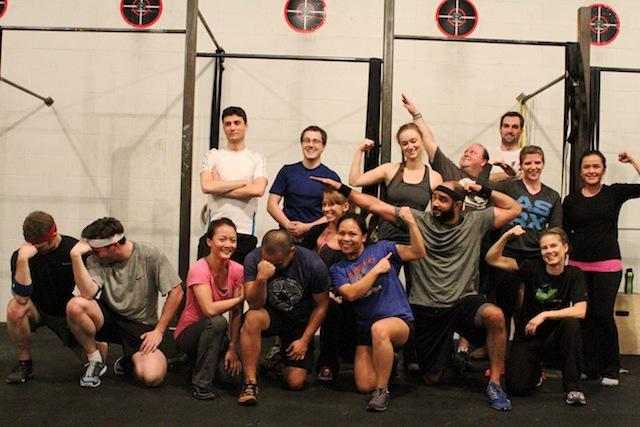photography by Scotty Bara
Only in the 21st century do fingers get more exercise on computer keyboards than does the rest of the body “hunting” for food at the supermarket. Nike runs the slogan “If you have a body, you are an athlete,” but clearly, fitness programs for athletes need to target more than just their fingers.
“A lot of people live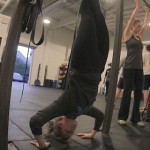 their life in a chair and literally forget how to move,” Tim Dymmel, CrossFit trainer and owner of CrossFit Palo Alto said. “We take real life needs and break those down into a training program.”
their life in a chair and literally forget how to move,” Tim Dymmel, CrossFit trainer and owner of CrossFit Palo Alto said. “We take real life needs and break those down into a training program.”
Started in 1995 by Gary Glassman and Lauren Jenai in Santa Cruz, the CrossFit conditioning program focuses on “forging elite fitness,” by featuring functional movements and incorporating body weight movements, cardio and weight lifting.
“The main thing about CrossFit is that it’s really built on three pillars of athletic performance: metabolic conditioning or cardio, a lot of gymnastics or any type of body weight exercise, and gym routines, weight lifting and power lifting,” Tony Obrero, trainer and owner of Prometheus CrossFit, said. “We like to do a lot of work and we like to do it in short amounts of time.”
Every day, 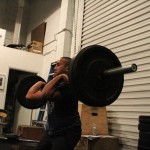 CrossFit’s main website Crossfit.com publishes a unique workout of the day, or “WOD.” Varsity lacrosse player and former crossfitter Emma Beckstrom (‘13) notes that CrossFit’s programming differs from the high school team’s conditioning regimes too – whereas an entire team might do the exact same set, crossfitters perform sets designed for their fitness level.
CrossFit’s main website Crossfit.com publishes a unique workout of the day, or “WOD.” Varsity lacrosse player and former crossfitter Emma Beckstrom (‘13) notes that CrossFit’s programming differs from the high school team’s conditioning regimes too – whereas an entire team might do the exact same set, crossfitters perform sets designed for their fitness level.
“You do [workouts] all as a group but everyone does a different workout – everyone makes different modifications, and for pullups, they might use a resistance band or do less weight or less reps,” Beckstrom said.
Actually, most high school athletes have been exposed informally to some type of CrossFit already. Many coaches integrate body weight exercises such as pushups and pull-ups and weight training like dead lifts or squats into their athletes’ conditioning regimes, though some movements like the Olympic lifts or rope climbs might 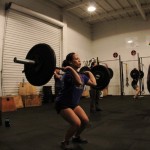 not be used as frequently because of either lack of safety, equipment, or technical training.
not be used as frequently because of either lack of safety, equipment, or technical training.
However, simpler intramuscular movements and interval Tabata-style workouts make workouts more efficient and prepare athletes for general fitness. A saying runs, “CrossFit punishes the specialist”- the best crossfitter won’t finish first in a marathon or win an Olympic gold for weight lifting, but would be the most generally fit when compared with highly specialized athletes. This high level of base fitness allows athletes to stop combining sports practice with conditioning and instead focus on sport-specific skills like working a springboard or shooting a basketball. For example, CrossFit trainer and owner of Amity CrossFit Aaron Ryan might have a unique conditioning program for soccer players.
“For a soccer player I would incorporate multi-joint movements, to get the neuromuscular coordination first, to get their whole body moving as a whole unit,” Ryan said. “Once they 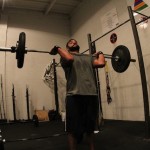 have the basics down, I might start getting them some more explosive movements like Olympic lifts to help with power.”
have the basics down, I might start getting them some more explosive movements like Olympic lifts to help with power.”
CrossFit also focuses on form and technique, with the intent of maximizing work and safety in every movement. Dymmel, Ryan and Obrero all agree that crossfitters should workout in a gym with a coach present, in case an athlete needs to modify a workout or learn a new skill for the WOD.
“What I find is that CrossFit reveals weaknesses,” Dymmel said. “[Usually when there’s an injury,] it wasn’t that movement that hurt you. It’s the fact that you’re already hurt and it’s been covered up, so you have to deal with it.”
Beckstrom’s experience with CrossFit has carried over to her experience on the field, too.
“I play goalie and I was able to 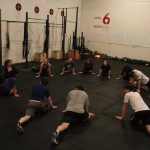 squat longer and was more agile,” Beckstrom said. “Muscles I didn’t even know I had got stronger.”
squat longer and was more agile,” Beckstrom said. “Muscles I didn’t even know I had got stronger.”
The physical benefit is just one dimension of CrossFit; it also emphasizes the importance of community and camaraderie, both of which are, in Dymmel’s view, part of what makes this new program unique and effective.
“One of the best things about it is that you’re doing it in a group, in a community, so when you’re done, you’re bonded with [the others], you’ve gone through an experience with them and there’s a great level of camaraderie,” Dymmel said. “It’s more than a gym: People are actually involved, there are no headphones in this gym, and no one leaves until everyone’s done.”
Much like in hig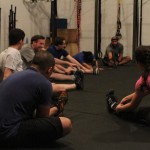 h school athletics, this community of crossfitters has inherent competitiveness – CrossFit has been dubbed “the sport of fitness.” The CrossFit Games showcase athletes with superior fitness and certification conventions award trainer with levels one and two titles. However, there’s not yet a program for high schoolers, but Beckstrom isn’t slow to note its effectiveness.
h school athletics, this community of crossfitters has inherent competitiveness – CrossFit has been dubbed “the sport of fitness.” The CrossFit Games showcase athletes with superior fitness and certification conventions award trainer with levels one and two titles. However, there’s not yet a program for high schoolers, but Beckstrom isn’t slow to note its effectiveness.
“It’s fun, it’s motivating and the feeling you get after a one hour class of CrossFit is 100 times better than [how you feel] when you walk out of a gym,” Beckstrom said. “Some people say it’s a cult and in some ways it is – I always leave with a smile on my face.”



